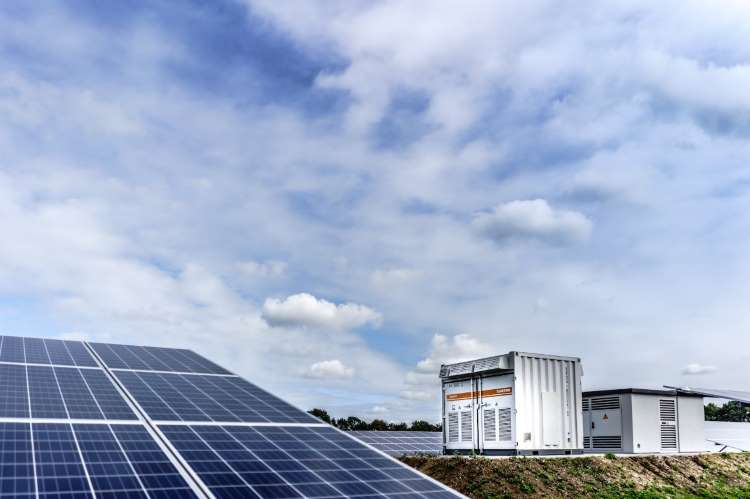
Renewable energy has become a cornerstone in the global strategy to combat climate change and transition to sustainable energy systems. However, the viability of renewable energy projects hinges on advancements in storage technology. The latest developments in the field of energy storage hold lot of promise, and are complemented by supportive policy decisions by governments.
Renewable energy sources like solar and wind are inherently intermittent, producing power only when the sun shines or the wind blows. This poses a significant challenge to grid stability and reliability. Energy storage systems (ESS) play a critical role in bridging the gap between supply and demand, ensuring a steady flow of electricity even when renewable sources are not generating power.
ESS enhance grid stability and reliability by balancing supply and demand, thus reducing the need for fossil fuel-based backup power. Moreover, these systems allow for peak shaving, which involves storing excess energy during periods of low demand and releasing it during peak demand. This optimisation of energy usage not only improves efficiency but also reduces costs.
The energy storage also provides a reliable emergency backup in the event of natural disasters or grid failures, ensuring continuous power supply for critical infrastructure such as hospitals and emergency services. By smoothing out the supply fluctuations of renewable energy, storage systems also facilitate greater integration of solar and wind power into the grid. This increased integration is vital for achieving a sustainable and decarbonised energy future.
READ I Chip manufacturing: China looks to out manoeuvre US with $47.5 bn war chest
Developments in energy storage technology
Recent years have seen significant advancements in various types of energy storage technologies, each offering unique advantages and applications. Lithium-ion batteries have come to dominate the market due to substantial cost reductions and performance improvements. Prices for these batteries have plummeted from $1,400 per kilowatt-hour in 2010 to less than $140 in 2023, driven by economies of scale and advancements in manufacturing processes. This cost decline, coupled with higher energy densities and longer lifetimes, has made lithium-ion batteries the preferred choice for both electric vehicles (EVs) and utility-scale storage projects.
Flow batteries represent another promising development, capable of providing energy for up to 15 hours. These batteries use liquid electrolytes that can be replenished, offering a longer lifespan and greater scalability compared with lithium-ion batteries. This makes them ideal for long-duration storage applications. Thermal energy storage is another innovative solution, capturing and storing heat or cold to be used later for heating, cooling, or electricity generation. This technology is particularly useful for balancing seasonal variations in energy demand.
Mechanical storage systems, such as pumped hydro and flywheels, harness kinetic or gravitational energy to store electricity. These technologies are highly efficient and can provide rapid response times, making them suitable for grid stability and emergency backup. Hydrogen storage is another cutting-edge solution, where excess renewable energy is used to produce hydrogen via electrolysis. This hydrogen can be stored and later converted back into electricity or used as a fuel, offering a versatile and long-term storage solution.
Policy direction and investments
Government policies and investments are crucial in accelerating the deployment of energy storage technologies. The US department of energy has committed to reducing the costs of long-duration storage technologies by 90% by 2030. This ambitious goal is supported by substantial funding for innovative projects and research into new storage solutions. Investment incentives, such as subsidies, tax credits, and grants, are being provided to encourage the development and deployment of energy storage projects.
Regulatory support is also essential, with policies being crafted to allow energy storage systems to participate in energy markets. This ensures that these systems are appropriately remunerated for the various services they provide, such as grid stability and peak shaving. Significant funding is also being directed towards research and development to improve the performance and reduce the costs of existing storage technologies, as well as to develop new solutions.
Global trends and future outlook
The push towards renewable energy is gaining momentum worldwide, with the world leaders looking to triple the use of renewables by 2030. Achieving this ambitious goal requires a substantial increase in energy storage capacity. In 2023, 42 gigawatts of battery storage capacity were added globally, a number expected to rise significantly in the coming years. Despite these advancements, several challenges remain. The upfront cost of energy storage systems, while decreasing, still poses a barrier to widespread adoption. Continued innovation and economies of scale are essential to further reduce costs and make these technologies more accessible.
The global supply chain for critical minerals like lithium, cobalt, and nickel is concentrated in a few countries, posing risks of supply disruptions. Efforts are needed to diversify supply sources and enhance recycling of battery materials to mitigate these risks. Additionally, regulatory barriers in many regions need to be addressed to create conducive environments that recognise the full value of storage systems and support their deployment.
Energy storage technology is a linchpin in the world’s transition to a renewable energy future. By addressing the intermittency of renewable sources, storage systems ensure grid stability, enhance energy security, and support the integration of more renewable energy into the grid. Continued advancements in storage technology, coupled with supportive policies and investments, are essential to achieving global climate goals and creating a sustainable energy future. The journey towards a decarbonised world is complex and challenging, but with the right investments in storage technology, the vision of a green and sustainable future is within reach.

